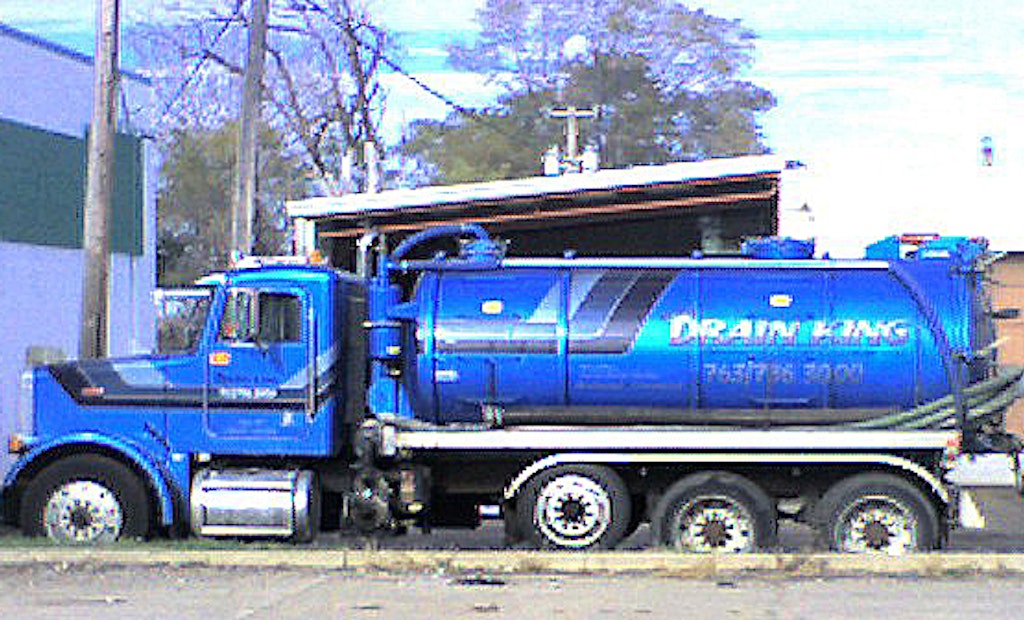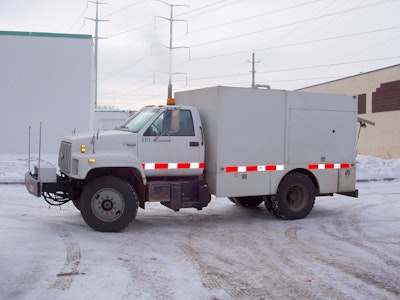
Interested in Pumps?
Get Pumps articles, news and videos right in your inbox! Sign up now.
Pumps + Get AlertsWe celebrate the continued dedication and hard work of drain cleaning contractors by revisiting companies profiled 10 years ago in Cleaner magazine. Check out the original story on the Drain King Inc. cleaning company we featured in the February 2003 issue: “Subcontracting Success.”
When we first visited Drain King Inc. of Blaine, Minn., 10 years ago, the company had been in business for a decade, the entrepreneurial dream of President Bill Schiller. A total of 20 employees engaged in drain cleaning for food service businesses, parking ramps and garages, landfills and municipalities with annual billings of $1.7 million.
These days, the business has relocated into the city of Minneapolis, continuing to serve the Twin Cities metro area. Added to their initial service offerings are now grease trap and sewer inspection and pumping; septic installation and pumping; storm drain cleaning, sewer line locating, and frozen sewer line repair for restaurants, service stations, hotels and other commercial and domestic customers.
Schiller added septic services and got liquid waste hauling and pipe laying licenses about eight years ago, in an effort to diversify his client base. Then, his service split was about 75 percent residential and 25 percent commercial. That has essentially flip-flopped, since Schiller realized, following the stock market debacle of 2008, that he needed to tighten up his operation to stay profitable by cutting costs, and go for more commercial work.
Market shift
“With commercial, we would get much larger billings and properties (with each customer),” he says. “We could get more work with a better return on investment (for the sales effort).” He turned a cold eye on marketing costs, which were through the roof at about $120,000 per year. It wasn’t pulling much in the commercial realm, and Drain King wasn’t recouping that in residential jobs. He decided to make a bold move.
“We quit advertising in the phone book,” he recalls. “Instead, we signed up for a program through their online division that tracked and recorded phone calls from our website, so we could apply a controlled dollar amount of advertising ROI.”
He says the ability to track ad expenditures was enlightening, and allowed the company to put the majority of its marketing spend into areas proving most effective. The non-print channel is also versatile, allowing Schiller to change ad messaging, content and delivery as needed, instead of being locked into an annual print rut.
Staffing changes
With the drop in residential work, Schiller was able to pare his staff down to 14, cross-training some so they could fill the need for work that would otherwise require several part-time people. This held down hiring, training and benefits costs.
Drain King now consists of six full-time technicians, one technician whose responsibilities include sales duties during half his hours, two full-time equivalent office staff, two executive positions with 20 percent time technician duties, and one technician with 80 percent shop duties. That makes a dozen staff plus Schiller and Vice President Art Kallenbach. Schiller’s son, Austin Schiller, now works as a parts runner and is learning the business, with plans to eventually take over when his dad retires. The high school senior also helps on commercial jobs.
Since 2003, four family members have left the business’ management staff. Added to the belt-tightening, this represents a 30 percent reduction in total staff. Accordingly, Drain King’s annual revenues dipped to $1.2 million, but efficiencies in technology usage drive greater profitability.
Changing management roles
With consolidation of management from six people to two, Schiller and Kallenbach now share responsibilities. Kallenbach has taken over most accounting duties and Schiller handles sales and marketing. Both also fill in as technicians on emergency calls when necessary.
With these efficiencies in place, Schiller was ready to add industrial work to the company’s offerings. “We have a big jetter now,” he explains, “so we can do large industrial work and some small city jobs. We can now clean high-volume interceptors under parking lots, jetting them out, pumping sand, grit and trash out of there. Basically, if it has something to do with a pipe, we can take care of it.”
Of course, new equipment meant new training. All of Drain King’s plumbers are licensed and drain technicians are trained in-house. Senior technicians are paired with new hires until Schiller is convinced they’re ready to handle the equipment safely and effectively alone. All technicians are trained for pumping and jetting.
New website marks sea change
The tighter, more productive crews resulted in more and larger commercial accounts, including 80 Walmart supercenters in the state. Drain King also services a third of all Burger King restaurants in Minnesota, about 80 percent of its Wendy’s restaurants, and large local property management accounts. Another major client is the City of Minneapolis, which contracts the company to clean drains and traps in 26 public parking structures.
Schiller says all these major commercial accounts came in since Drain King got the new website around 2003. That’s when the company abandoned print advertising, except for simple line listings that cost about $200 a month.
The company now has a modern, interactive site with a video intro and 10 percent off coupon. It’s maintained by the provider, allowing Drain King to focus on its core business. They changed their domain name from DrainKing.net to DrainKingInc.com, because “people look for dot-coms,” says Schiller.
Annual marketing costs are now roughly $70,000, 80 percent of which is spent on website search engine optimization and search engine marketing. On average, 20 to 30 percent of new work comes in through the site.
“Whatever they’re doing is working,” says Schiller, “and they provide tracking,” so Drain King can measure its ROI. He credits the shift to primarily commercial work and getting out of print advertising as “likely the biggest reasons we’re still around today. Contractors have to get out of print. Everyone’s got a smartphone, that’s the way marketing is moving.”
Marketing and sales effort
The other 20 percent of the marketing budget pays for a salaried technician with a marketing degree to do cold calls and follow-ups. The company also continues its proven practice of having employees make phone calls or personal visits to potential customers during slow periods, leaving business cards and stickers.
They still call municipalities after cleaning out a main sewer line to make them aware of the condition of their systems so they won’t end up with block-long backups, and send reminder postcards to residential customers for septic pumping and to commercial accounts for root removal.
Drain King has long tried to create a dedicated sales position, but had difficulty finding the right person. “It’s working now, because we’re grooming from the inside,” explains Schiller. “We chose someone who knows the business and can actually follow up on first response by doing the jobs himself. We can give great rates to new customers for first service to compare us. If they don’t have any basis to compare the company they’re using, they can’t know what they’re missing.”
Equipment ramp-up
Significantly lower advertising expenses allowed Schiller to gear up with equipment and vehicles to serve new commercial and industrial accounts. The company bought a 10,000-square-foot building last April in Fridley, a Twin Cities suburb near their old shop in Blaine, to house the larger operation.
The vehicle of choice for septic and grease trap pumping for customers such as Burger King, Walmart and Wendy’s is a five-axle pumper truck with a new 4,200-gallon fully opening and tilting tank, powered by a Fruitland pump. Centerline Tank & Trailer Mfg. built out the truck using a 2000 Volvo chassis with modified axles to support greater volume and weight. Used for any tank in excess of 500 gallons, this truck can haul about 1,800 gallons per trap.
Quite a bit of their equipment has been modified to suit their major contract work, such as a 2000 Mudsucker trailer with a vane pump to clean out larger grease traps. It has been modified with dropped torsion axles to accommodate the 6- to 8-foot clearance in parking garages and ramps for cleaning out inflammable traps.
Several larger vans, a 1994 GMC Kodiak jet truck, a four-wheel-drive pickup, several jetter trailers and portable jetters, a skid-mount jetter, a 2002 Bobcat skid-steer and a cube van round out the fleet. Along with the requisite cables and other small equipment, the crews run only the custom sewer cameras built in-house, except for camera heads.
They’re analog cameras whose feeds go directly into computer conversion software. If they find a broken line, crews transfer the video to their FTP site within a minute of it being posted, so large companies can view it to make informed work decisions immediately.
Drain King has come a long way, thanks to the adoption of digital technology in both marketing and the work itself. Schiller hopes to retire by the time the next decade goes by.
“I’ll have my son groomed to take over by then, and I think he’ll be able to take it farther than I have,” he predicts. “Everyone will always have to deal with plumbing, so there will always be work if you can adjust to changing technology.”







